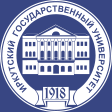List of issues > Series «Earth Sciences». 2023. Vol 44
Territorial Differentiation of the Population Demographic
Structure of Siberian Regions
Byuraeva Yu.G. Analiz demograficheskoi situatsii v regionakh Sibirskogo federalnogo okruga [Analysis of the demographical situation in the region of the Siberian federal district]. Vestnik BNTs SO RAN [Bulletin of the BSC SB RAS], 2018, no. 3(31), pp. 113-117 https://doi.org/10.31554/2222-9175-2018-31-113-117(in Russian)
Vandeskrik K. Demograficheskii analiz [Demographic Analysis]. Moscow, Gaudeamus Publ., 2005, 241 p. (in Russian)
Vorobiev N.V. Migratsionnye tendentsii i problemy regionov Sibiri [Migration trends and problems facing the regions of Siberia]. Geografiya i prirodnye resursy [Geography and Natural Resources], 2020, no. S5 (164), pp. 178-184.https://doi.org/10.21782/GIPR0206-1619-2020-5(178-184) (in Russian)
Glukhova Z.V., Alekseev N.E. Sovremennye tendentsii na rynke truda Sibiri i Omskoi oblasti [Modern trends in the labor-market of Siberia and Omsk region]. Vestnik SibAdi [The Russian Automobile and Highway Industry Journal], 2012, no. 3(25), pp. 105-111. (in Russian)
Grabelnykh T.I., Sablina N.A., Lesnikovskaya E.V. Sotsialno-demograficheskie faktory obshchestvennogo razvitiya v usloviyakh postglobalnoi realnosti [Socio-demographic factors of social development in the conditions of post-global reality]. Acta biomedica scientifica [Acta biomedica scientifica], 2022, no. 7 (2), pp. 72-82. https://doi.org/10.29413/ABS.2022-7.2.8 (in Russian)
Dmitrieva Yu.N. Territorialnye razlichiya pokazatelei demograficheskogo stareniya naseleniya (na primere Baikalskogo regiona) [Territorial distinctions of demographic aging indexes of population (on example of Baikal region)]. Izvestiya Irkutskogo gosudarstvennogo universiteta. Seriya: Nauki o Zemle [The bulletin of Irkutsk state university. Series Earth sсiences], 2018, vol. 25, pp. 41-53.https://doi.org/10.26516/2073-3402.2018.25.41 (in Russian)
Isupov V.A. Istoricheskaya demografiya v Sibiri: problemy istoriografii [Historical demography in Siberia: problems of historiography]. Gumanitarnye nauki v Sibiri [Humanitarian sciences in Siberia], 2012, no. 4, pp. 3-8. (in Russian)
Leshchenko Ya.A. Strukturnye izmeneniya demograficheskogo potentsiala Sibiri: osnovnye tendentsii i sledstviya [Structural changes of Siberia’s demographic potential: main trends and consequences]. Izvestiya IGEA. [Izvestiya of Irkutsk State Economics Academy], 2012, no. 5(85), pp. 137-142. (in Russian)
Ayusheeva V.G., Batomunkaev V.S., Zangeeva N.R., Emelyanova N.V. Prostranstvennyi analiz vozrastnoi struktury naseleniya Aziatskoi Rossii i sopredelnykh territorii [A spatial analysis of the population age structure of Asian Russia and neighboring territories]. Geografiya i prirodnye resursy [Geography and Natural Resources], 2021, no. 42(1), pp. 25-32.https://doi:10.15372/GIPR20210103 (in Russian)
Bucher S. Population ageing and changes in the age structure of Slovakia. Journal for Geography, 2012, vol. 7, pp. 7-24.
Caselli G., Vallin J. Demographic Trends: Beyond the Limits? Population, English Selection, 2001, vol. 13, pp. 40-74.
Keifits N. Some Demographic Properties of Transfers Schemes: How to Achieve Equity between the Generations. Economics of Changing Age Distribution in Developed Countries. Oxford, 1995. 102 p.
Oeppen J., Vaupel J. Demography. Broken limits to life expectancy. Science, 2002, vol. 29, pp. 1029-1031.
Prettner K. Population aging and endogenous economic growth. Journal of population economics, 2013, vol. 26, pp. 811-834.
Schoen R. Kim Young J. Movement toward stability as a fundamental principle of populationdynamics. Demography, 1991, vol. 28, pp. 455-466.
Schoen R. Kim Young J. Momentum under a gradual approach to zero growth. Population Studies, 1998, vol. 52, pp. 295-299.
Smith D. P. Formal demography. New York, Plenum Press, 1992, 304 p.
Urban Agglomeration 2001. New York, United Nations, 2001.
World Population Prospects: The 2002 Revision. New York, United Nations, 2003. Vol. 2.36 p.
